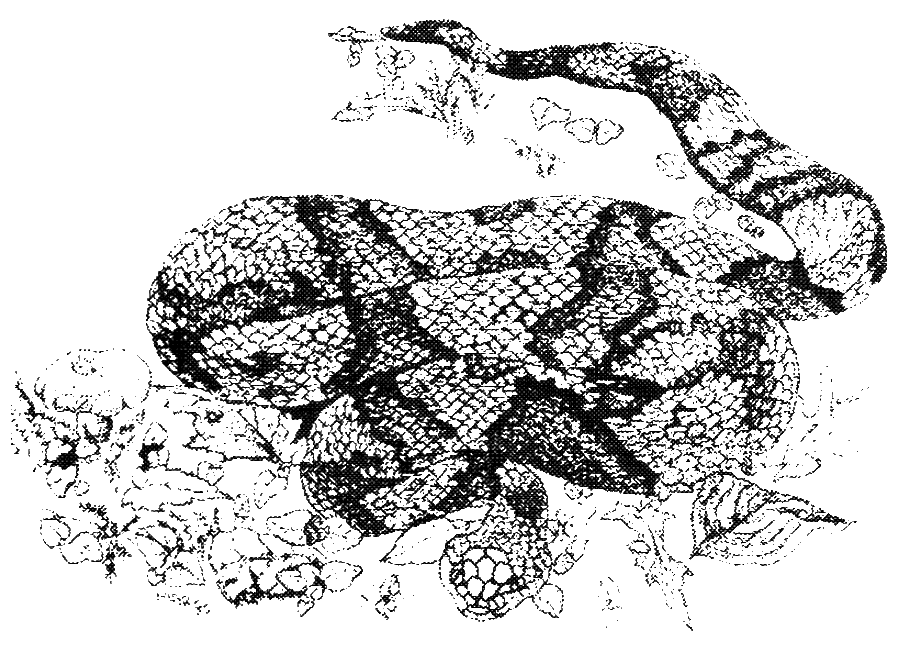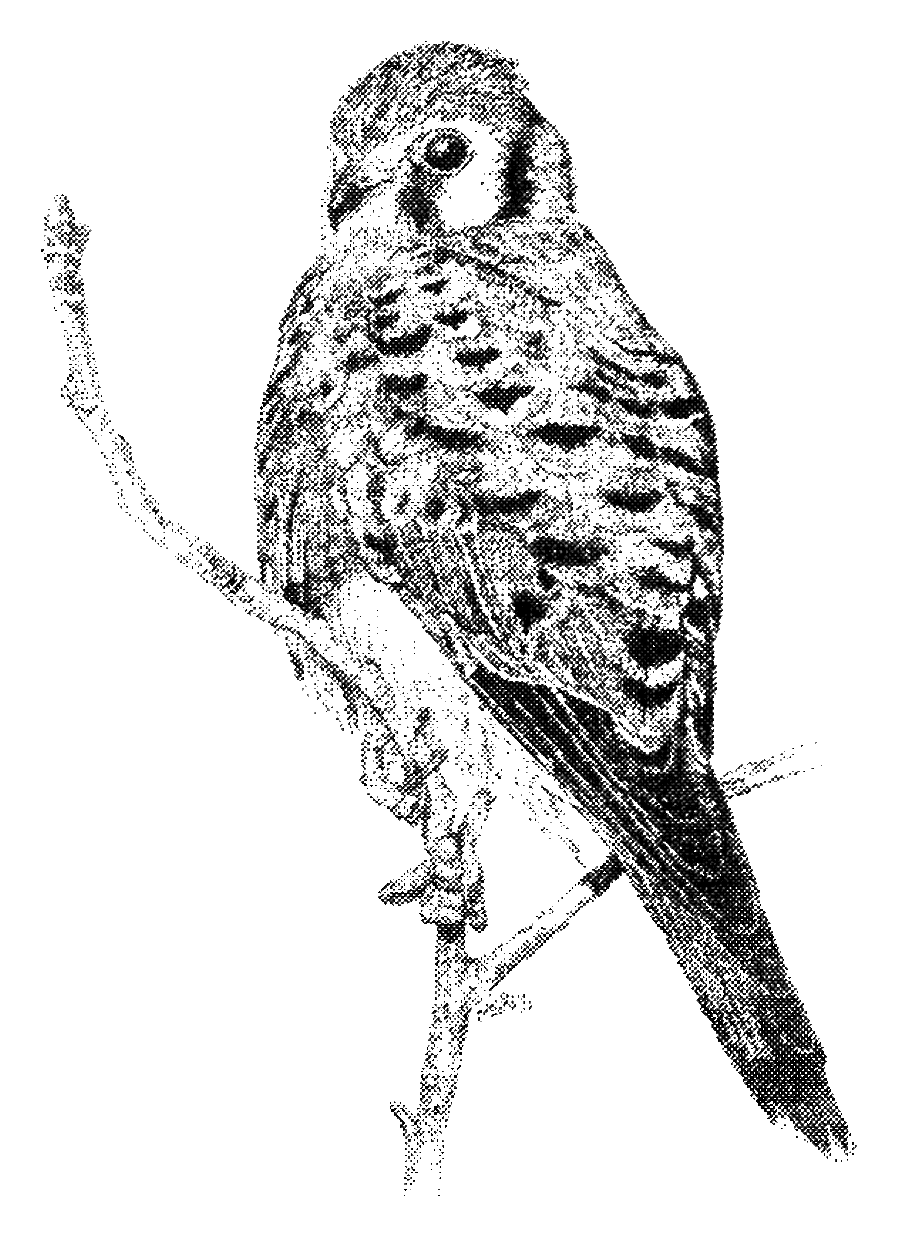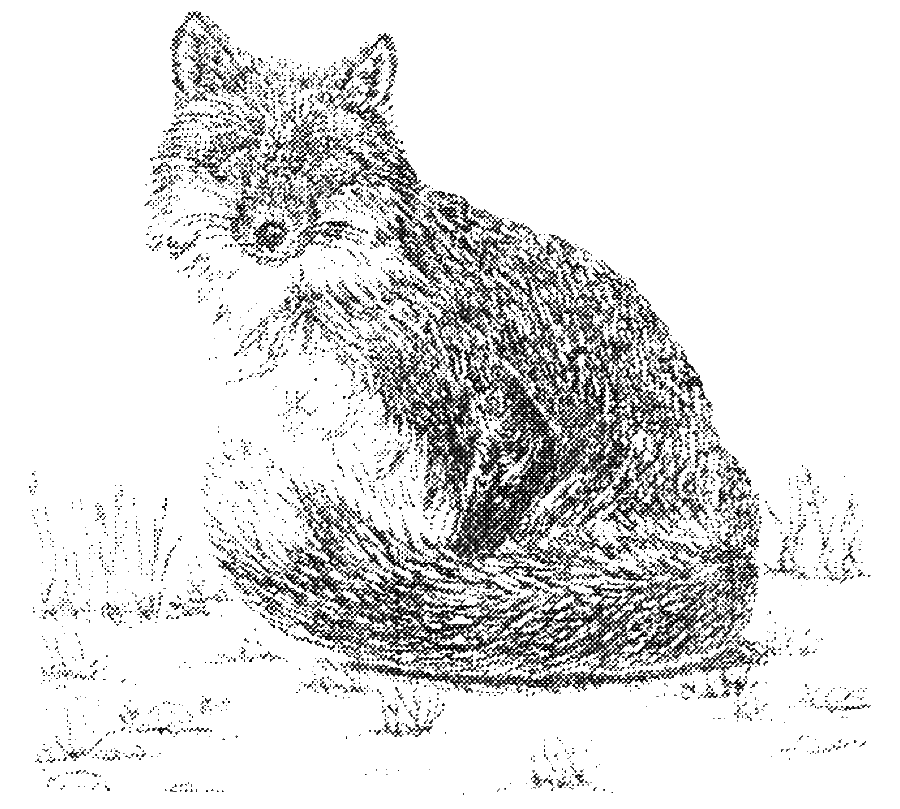Early Northern Neck letters and diary entries often mention the great bounty and variety of wildlife found throughout the uplands and along the waters’ edges. Today, in our rush to make the next meeting or get to work on time, we sometimes fail to recognize the beauty of the animal world surrounding us.
The breadth of wild animals on the Neck is a natural byproduct of the tremendous diversity of habitats still found here, and of the temperate climate that prevails over the coastal plain. As it turns out, Virginia is the great “melting pot” of animal diversity—representing the northernmost range for typically southern species, and the southernmost range for many of our northern friends.
It is where many species test their adaptive limits, and produce real, genetic variation. Virginia’s coastal plain also happens to sit right in the middle of the Atlantic Flyway, one of four major migratory routes for birds traversing North America. These factors, coupled with a manageable human population, join to make the Northern Neck a safe haven for animals.
Over 1,100 miles of tidal shoreline create biologically rich corridors where land and water exchange energy, allowing many small animals to thrive and, at the same time, create food for larger, inland mammals and predatory birds. These transition zones—the wetlands and marshes found along the waters of the Rappahannock and Potomac—are where the action is. It is here that ducklings try out their wings, peepers sing till the wee hours of a summer morning, and the white-tailed deer wander at night to the water’s edge for a cool drink.
Life at the Edge
During a spring afternoon on the upper stretches of a tidal creek, when all is quiet, you just may witness the breathtaking precision of a bald eagle or an osprey dive-bombing a fish, or hear the slightest smack of an otter’s tail as it glides into the water well ahead of you. You’re also likely to spot a muskrat returning to its den, or be startled by the loud protests of a great blue heron leaving its roost because you’ve ventured a bit too close.
 These are the inevitable privileges of watching the daily rhythms of life at the edge, in a marsh or wetland. It is a place where turtles, frogs, lizards, and snakes abound.
These are the inevitable privileges of watching the daily rhythms of life at the edge, in a marsh or wetland. It is a place where turtles, frogs, lizards, and snakes abound.
Of all the snakes common to the Northern Neck, you’ll want to be able to identify the venomous copperhead. Others, like the black snake, will bite if provoked and can cause serious bleeding, as many a poor dog has discovered.
Along other edges fronting the Chesapeake Bay, the diamondback terrapin occasionally comes aground. Several nests have been uncovered at Belle Isle State Park, indicating that the area has been an important nursery site for some time. Diamondbacks feed on those prehistoric-looking fellows also vying for space along sandy ribbons of land—common grass shrimp and fiddler crabs.
It should come as no surprise that with so much water sitting idle or plodding slowly along, a rich brew of creeping, crawling, flying insects make their home on the Northern Neck. Common and not-so-common spiders, flies, beetles, chiggers, gnats, and “no-see-ums” make a daily nuisance of themselves during the dog days of summer (where a tightly screened porch is your safest outdoor refuge). Of the spiders, keep an eye out for the black widow, prone to nesting in sandboxes. Common fleas and green-headed flies are prevalent during late summer, and ticks carrying some nasty diseases have taken down more than a few dogs.
On the brighter side, the tidewater low country rivals any backwaters of the Chesapeake Bay for bird lovers. The elegant Canada and snow geese take up winter residence in area marshes, as do brant and all sorts of ducks—green-winged teals, goldeneyes, buffleheads, hooded mergansers, and common pintails. Folks living directly on Chesapeake Bay are visited by sea ducks, gannets, herring gulls and ring-billed gulls, terns, and double-crested cormorants.
On Higher Ground
Among the common upland animals, you’ll likely encounter wild turkeys, white-tailed deer (whose population has exploded in recent years due to a proliferation of “edge” habitats, created when pockets of the forest are cleared for houses or other uses), red and gray foxes, raccoons, and eastern cottontails.
 Flying overhead are owls, kestrels, marsh harriers and red-tailed hawks, as well as less admired turkey vultures and, at dusk, brown bats. They all have an important role to play in nature’s balancing act. Brown bats, for instance, do us the tremendous favor of consuming hundreds of mosquitoes and other flying insects each night.
Flying overhead are owls, kestrels, marsh harriers and red-tailed hawks, as well as less admired turkey vultures and, at dusk, brown bats. They all have an important role to play in nature’s balancing act. Brown bats, for instance, do us the tremendous favor of consuming hundreds of mosquitoes and other flying insects each night.
Of the birds seen around here, only a handful are considered residents. All others spend a good portion of the year in latitudes north or south of the Neck. Mourning doves and bobwhite quail are plentiful and still hunted with great fervor during the fall. Other regulars of the airwaves include pileated woodpeckers, eastern bluebirds, grackles, and goldfinches. They share good fortune and mild weather with their seasonal counterparts during much of the year.
These seasonal visitors include cardinals, warblers, indigo buntings, red-winged blackbirds, blue jays, kingfishers, robins, and a large assortment of swallows. And if you have trumpet creeper, crepe myrtle, or other nectar-producing plants around your house, you may be lucky enough to lure the ruby-throated hummingbird to your yard. This tiny bundle of energy will delight you with its insatiable acrobatic skills, while beating its wings up to seventy times per second. It is, by the way, the only hummer found in the eastern states.
The Northern Neck also has become an important seasonal home to a large number of neotropical songbirds. They spend the summer months nesting here, and the rest of the year in Central and South America and the Caribbean. Thick, deep patches of forest are key to the survival of these tiny avian friends. The scarlet tanager and northern oriole are two colorful examples. A variety of warblers and sparrows also inundate the airwaves with their melodious song.
Other birds that used to thrive here are now gone or just barely holding on. The peregrine falcon and bald eagle appear to be making a comeback. Others such as the black-crowned night heron, the short-eared owl, greater and lesser sirens, and the least bittern are under close observation by the State and local birding groups.
The Importance of Habitat
Birds like the bald eagle need quite a large undisturbed flying range, which is generally hard to come by on the East Coast. The Northern Neck is one of only a handful of places on the Atlantic seaboard uniquely able to satisfy this habitat need. Ensuring the bald eagle’s continued presence will depend upon focused, long-term management.
 Like the care of all natural resources, the care of wildlife today is a very dynamic management process relying on the latest scientific information and regional approaches aimed at long-term solutions.
Like the care of all natural resources, the care of wildlife today is a very dynamic management process relying on the latest scientific information and regional approaches aimed at long-term solutions.
Lots of dedicated people work to save and enhance the future of the world’s wild animals through research, fieldwork, and public education. When on the Northern Neck, report any hurt or dead animals you come across to the game warden or local sheriff’s office, especially deer, which are most likely to be hit along the highways.
Other wildlife-related concerns or questions should be directed to the Virginia Department of Game and Inland Fisheries—the state agency responsible for granting hunting, fishing, and boating licenses. The department offers safety classes on hunting and boating, as well. They are the people to contact if you witness poaching or other illegal hunting and fishing practices.
Private groups like the Northern Neck Audubon, the Rappahannock River Resource Council, and the Northumberland Association for Progressive Stewardship also work on wildlife-related issues and would welcome your help.
Beavers
If you spend any amount of time paddling in the headwater reaches of the peninsula, you will sooner or later encounter the engineering feats of a most industrious river creature—the beaver. Beaver homes, or dens, are usually built inside of deep ponds, created by dammed streams and creeks.
Many a weary canoeist has been forced to portage around these obstructions of logs, mud, and debris. And frustrated farmers must contend with fields flooded along the water’s edge near beaver construction sites. The den features an underground entrance and exit, for quick escapes from natural predators.
Beavers weren’t so lucky escaping human predators, though. They nearly succumbed to over-trapping during the 1800s, when their pelts were cured into a luscious felt for hats. They are still trapped in the marshes of the Rappahannock and Potomac rivers, often in contraptions modeled after the deadfall trap, designed by the Pamunkey Indians centuries ago.
While often cursed for their destructive behavior, beavers contribute to the growth of young shrubs, groundcover, and understory trees in the forest, which benefit from the added sunlight made available by their cutting activities.
A study to locate all the beaver dams in a five-mile stretch of Cat Point Creek was once conducted to determine the impact that beaver dams have on the spawning of herring (alewife and blueback). Herring are anadromous fish (i.e., they spend the majority of their life in saltwater but reproduce in freshwater streams with sandy bottoms).
No study has been conducted regarding beaver dams as impediments to fish passage. Cat Point Creek Watershed Committee Volunteers used differential GPS to locate all the beaver dams in a five-mile stretch of the Creek, and catalogued 37 beaver dams. VCU staff, using electroshock-sampling techniques, identified 37 fish species, including 7 non-native fish species.
The Recovering Bald Eagle
Whether new or old to the “neighborhood,” you have probably heard much to-do about bald eagles. Throughout the Commonwealth, the bald eagle population is recovering well, and in no place is this more apparent than in the Rappahannock River valley. Bird lovers, land planners, and scientists point with enthusiasm to the high number of sightings and nests found in the past few years. Adult and juvenile eagles are frequently sighted along the Potomac’s shores, as well. Their numbers not only speak of the efforts by many people to protect the birds, but also underscore the value of vast stretches of undisturbed acres still left on Virginia’s northernmost peninsula.
Bald eagles have long been cherished as a national symbol of courage and grandeur but, in truth, the bird is cunning and calculating, prompting Benjamin Franklin to write, “He is a bird of bad moral character,” which “does not get his living honestly.” Indeed, the bald eagle often steals a meal from the talons of an osprey or other bird flying in its range. Small mammals of the river’s edge supplement the eagles’ preferred food source—fish that are plucked dead from the shoreline or fresh out of the water with uncanny precision. With two centers of focus in each eye, the eagle is blessed with the ability to see sideways and head-on at the same time. Bald eagles are long-lived (when given a chance) and do not reach breeding age until four or five years. At age five, they possess their trademark white head and tail feathers, so stunning in flight.
Researchers working for the Center for Conservation Biology at the College of William and Mary have followed bald eagles long enough to understand the critical habitat conditions needed by the bird for a continued recovery:
- Bald eagles tend to live near vast reaches of open water. They choose tall, healthy trees along the water’s edge for nests that can weigh over a ton. Trees such as loblolly pine are preferred, as well as other pines, American beech, and tulip poplar.
- Bald eagles need to raise their young in peace. Extended periods of disturbance, such as timbering or farming or boating and fishing activity within sight of their nests may cause adult birds to abandon their young or lead to the premature flight and sure death of their chicks.
Human activity on large waterfront parcels over the coming years—whether timbered or farmed or splintered off for development—will have tremendous impact on the future of these magnificent birds. If you own a large tract of forestland and are willing to leave a sufficient buffer around a nest (generally considered to be 250 meters during nesting season, but dependent on site characteristics), you can take the first important step toward protecting the eagle.
If you spot an eagle’s nest when out on the water, make note of its exact location and leave the area. Tell your friends and neighbors to avoid the spot, especially during the nesting season, mid-January through late July. For more information about bald eagle research, contact the Center for Conservation Biology, listed in the “Resources & Information” section of this book.
